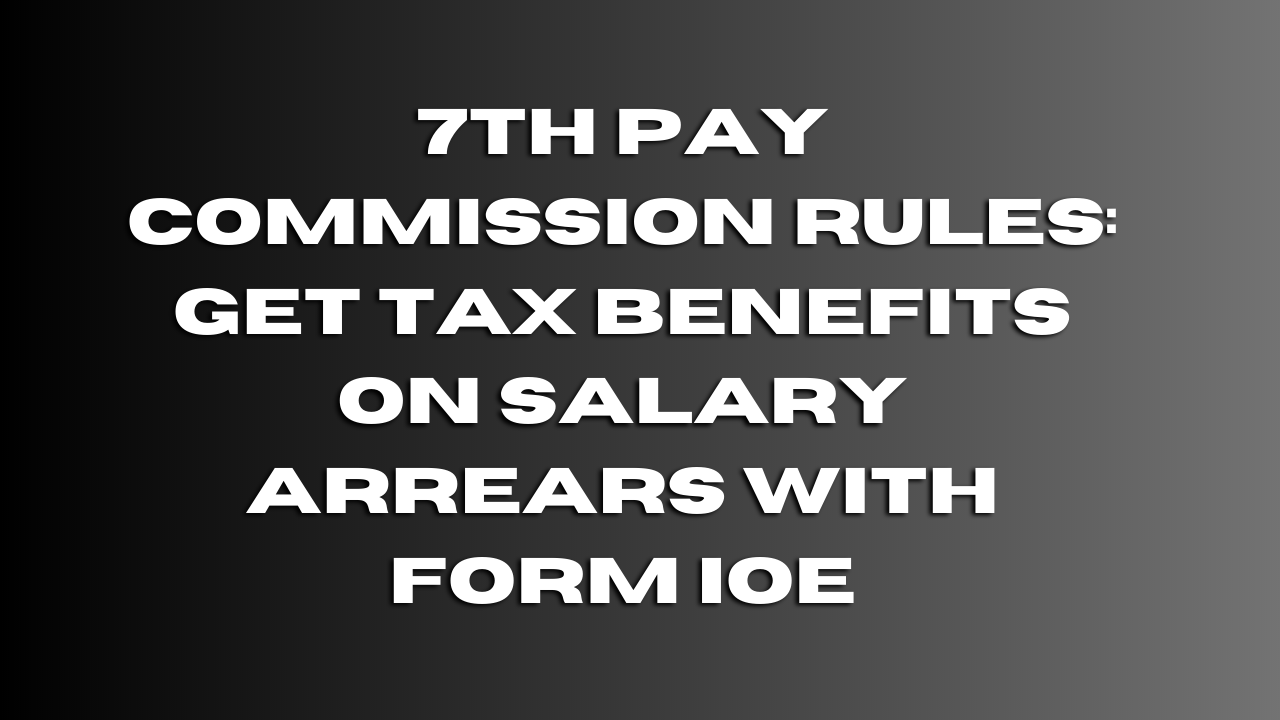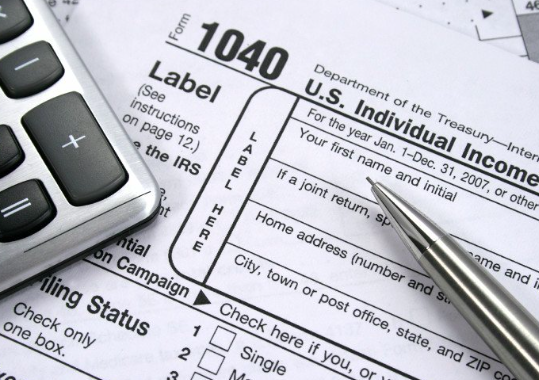The 7th Pay Commission is a central government body in India responsible for recommending revisions in the salary structure and other allowances of central government employees. It was constituted by the Government of India in 2013 and submitted its recommendations in 2015. The recommendations of the 7th Pay Commission are implemented to ensure fair compensation and benefits for government employees.
Understanding Salary Arrears and Tax Implications
These salary arrears have tax implications, and it’s important to understand how they are treated for tax purposes. Here are key points to consider:
- Taxable in the Year of Receipt: Salary arrears received in a particular financial year are taxable in that year, regardless of the year to which they pertain. For example, if arrears for the past three years are paid in the current financial year, they will be taxed in the year of receipt.
- Relief Under Section 89(1): To reduce the tax burden on salary arrears, employees can claim relief under Section 89(1) of the Income Tax Act, 1961. This provision allows for the calculation of tax liability on salary arrears as if they were received in the year(s) to which they pertain, spreading the tax liability over multiple years.
- Form IOE: To claim relief under Section 89(1), employees need to fill and submit Form IOE (Income under the Head Salaries, Statement of Tax Relief Claimed under Section 89(1)), along with their income tax returns. Form IOE provides details about the salary arrears received, the year(s) to which they pertain, and the relief claimed.
- Calculation of Relief: Relief under Section 89(1) is calculated based on the income tax rates applicable in the years to which the arrears pertain. This involves computing the tax payable on the total income of each relevant year, with and without the arrears, and calculating the difference.
- Income Tax Return Filing: When filing income tax returns, employees should accurately disclose the salary arrears received and the relief claimed under Section 89(1). This ensures proper compliance with tax regulations and prevents any potential issues during tax assessments or audits.
Benefits of Tax Exemption on Salary Arrears
When it comes to salary arrears received by employees, tax exemption provisions can provide significant benefits. Here are some key advantages of tax exemption on salary arrears:
- Reduced Tax Liability: Tax exemption on salary arrears helps reduce the overall tax liability of employees. By claiming relief under Section 89(1) of the Income Tax Act, employees can spread the tax liability over multiple years, resulting in lower tax payments.
- Lower Tax Slabs: Spreading the income from salary arrears over multiple years may result in the arrears being taxed at lower tax slabs compared to if they were taxed in the year of receipt. This can result in considerable tax savings for employees.
- Avoidance of Taxation Anomalies: Taxation anomalies can occur when a large sum of salary arrears is taxed in a single year, leading to a higher tax liability due to the progressive nature of income tax rates. By claiming relief under Section 89(1), employees can avoid such anomalies and ensure a fair and balanced tax treatment.
- Cash Flow Management: The tax exemption on salary arrears provides employees with better cash flow management. Rather than facing a sudden increase in tax liability in the year of receipt, employees can spread out the tax payments over multiple years, making it easier to manage their finances.
- Ease of Compliance: Claiming tax exemption on salary arrears through Form IOE simplifies the compliance process. Employees can accurately calculate and claim the relief due to them by providing the necessary details in the form and including it with their income tax returns. This helps ensure compliance with tax regulations while maximizing tax benefits.
Eligibility Criteria for Claiming Tax Benefits on Salary Arrears
To claim tax benefits on salary arrears through the relief provisions under Section 89(1) of the Income Tax Act, certain eligibility criteria must be met. Here are the key criteria to consider:
- Arrears Received: The employee must have received salary arrears that relate to a previous financial year or years. These arrears can be a result of pay revisions, promotions, or delayed implementation of pay commission recommendations.
- Payment in the Current Financial Year: The arrears must have been paid in the current financial year for which the relief is being claimed. It is important to note that the tax exemption applies to the arrears received in the current year, not the year to which they pertain.
- Regular Salary Income: The employee must have a regular salary income, which includes the arrears received, during the financial year for which the relief is being claimed.
- Form IOE Submission: The employee is required to fill and submit Form IOE (Income under the Head Salaries, Statement of Tax Relief Claimed under Section 89(1)) as an attachment along with the income tax return for the relevant assessment year. This form provides details of the salary arrears and the relief claimed.
How to Fill Form IOE for Claiming Tax Exemption
Filling Form IOE accurately is crucial for claiming tax exemption on salary arrears. Here is a step-by-step guide on how to fill Form IOE:
- Obtain Form IOE: Download Form IOE from the official website of the Income Tax Department or obtain it from your employer or tax professional.
- Personal Details: Fill in your personal details such as your name, PAN (Permanent Account Number), and the relevant financial year for which the relief is being claimed.
- Calculation of Relief: Provide details of the arrears received in each relevant year and the tax payable for each year, both with and without the arrears. Calculate the difference in tax liability using the applicable income tax rates for each year.
- Aggregate Relief: Compute the aggregate relief for the financial year by summing up the differences in tax liability for each year.
- Verification and Signature: Verify the information provided in the form and sign it. If the form is being filled by a tax professional or accountant, their details and signature should be provided as well.
- Attach with Income Tax Return: Attach the filled Form IOE along with the income tax return for the relevant assessment year when filing your taxes.
Note: It is advisable to seek professional assistance from a tax professional or accountant to ensure accurate calculations and proper compliance with tax regulations when filling Form IOE.
Properly filling and submitting Form IOE with the necessary details is essential to claim tax exemption on salary arrears. By following the guidelines and seeking professional assistance, you can accurately report the salary arrears and the relief claimed, ensuring compliance with tax regulations and maximizing your tax benefits.
Important Points to Consider When Claiming Tax Benefits
When claiming tax benefits on salary arrears through relief provisions under Section 89(1) of the Income Tax Act and filling Form IOE, there are several important points to keep in mind. Consider the following:
- Accurate Calculation: Ensure accurate calculation of the relief under Section 89(1) by considering the income tax rates applicable in the years to which the arrears pertain. It’s advisable to seek professional assistance from a tax professional or accountant to ensure precise calculations.
- Eligibility Verification: Ensure that you meet the eligibility criteria for claiming tax benefits on salary arrears, including receiving arrears in the current financial year, having regular salary income, and submitting Form IOE with the relevant details.
- Documentation: Maintain proper documentation to support your claims, including records of the arrears received, pay slips, communication with the employer, and any other relevant documents. These records will be useful in case of any future tax assessments or audits.
- Timely Submission: Submit Form IOE along with your income tax return for the relevant assessment year within the stipulated deadline. Late submissions may result in penalties or the loss of tax benefits.
- Verification and Signatures: Ensure that the form is properly verified and signed by you as the taxpayer. If a tax professional or accountant is assisting you, their details and signature should be included as well.
- Compliance with Tax Laws: Comply with all relevant tax laws and regulations while claiming tax benefits on salary arrears. It’s crucial to accurately report the arrears received and the relief claimed to avoid any potential issues with tax authorities.
Impact of Tax Benefits on Salary Arrears on Income Tax Return Filing
The tax benefits obtained through claiming relief on salary arrears can have a significant impact on your income tax return filing. Here’s how it can affect your tax filing:
- Reduced Tax Liability: By spreading the tax liability of salary arrears over multiple years and claiming relief under Section 89(1), your overall tax liability is reduced. This results in lower tax payments and potentially increases your disposable income.
- Altered Tax Bracket: Spreading the income from salary arrears over multiple years may place you in a lower tax bracket for each relevant year compared to if the arrears were taxed in the year of receipt. This can result in substantial tax savings.
- Increased Refund Possibility: If you have already paid taxes on the salary arrears received, claiming relief can lead to a higher tax refund. This occurs when the relief results in a lower tax liability than what was originally paid.
- Accurate Reporting: Filling Form IOE and claiming tax benefits ensures accurate reporting of the salary arrears and the relief claimed. This helps maintain compliance with tax regulations and minimizes the risk of tax audits or penalties.
- Avoidance of Taxation Anomalies: By claiming relief under Section 89(1), you can avoid taxation anomalies that may arise from taxing a large sum of arrears in a single year. Spreading the tax liability ensures a fair and balanced treatment of your income.
Conclusion: Maximizing Tax Benefits on Salary Arrears through Form IOE
In conclusion, tax benefits on salary arrears provide significant advantages by reducing your tax liability, potentially placing you in lower tax brackets, and ensuring accurate reporting. By correctly filling Form IOE and adhering to the relevant procedures, you can maximize your tax benefits and effectively manage your tax obligations. Seeking professional advice will further enhance your understanding and optimize your tax filing strategy.
Also Read:
- Need Emergency Funds Quickly?
- Investing In Fixed-Income Instruments For High Returns? Is It The Right Strategy?
- SIP or Recurring Deposit: Which One You Should Choose?
- How to Use NFT Marketplaces for Buying and Selling?




